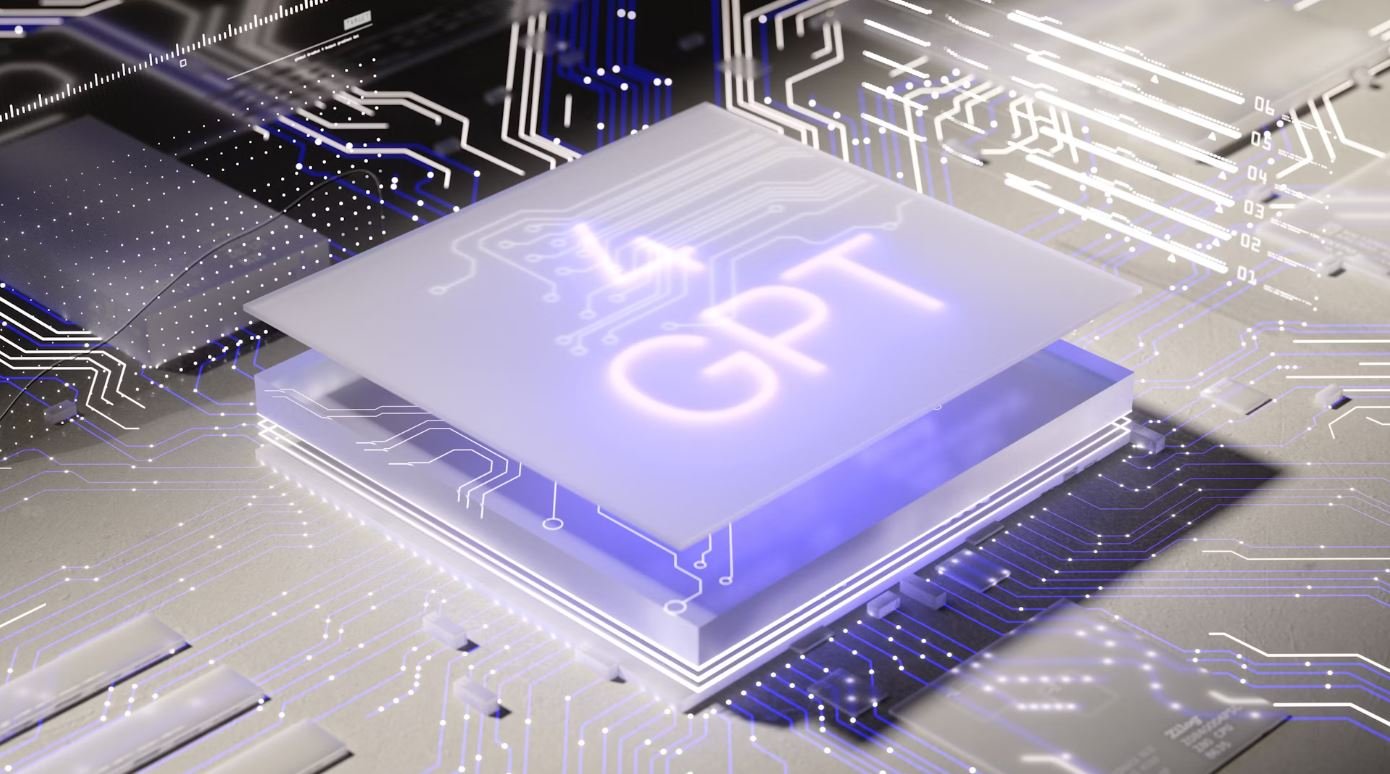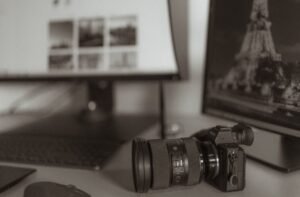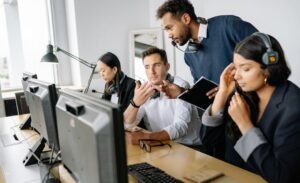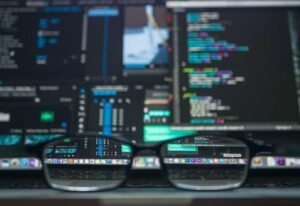What AI Creates Images
Artificial Intelligence (AI) has made significant advancements in the field of image creation. With the help of neural networks and deep learning algorithms, AI can now generate realistic and high-quality images. This technology has found applications in various industries, including design, gaming, and marketing.
Key Takeaways:
- AI utilizes neural networks and deep learning algorithms to create images.
- AI-generated images find applications in design, gaming, and marketing.
- Quality and realism of AI-generated images have significantly improved.
- AI-generated images can be customized and tailored to specific requirements.
The Evolution of AI in Image Creation
AI image creation has come a long way from simple pixel manipulation to the generation of complex and visually appealing images. Initially, AI was limited to basic tasks like colorizing grayscale images or adding filters. However, with the advent of deep learning techniques, AI has become capable of producing stunning images from scratch using generative models.
**One interesting development in this field is the use of Generative Adversarial Networks (GANs) where two neural networks, a generator and a discriminator, compete against each other.** The generator network tries to produce images that resemble real ones, while the discriminator network tries to distinguish between real and generated images. Through this adversarial training process, both networks improve, resulting in the creation of high-quality images.
The Realism of AI-Generated Images
AI-generated images are becoming increasingly realistic, blurring the line between real and artificial. Variations of GANs, like StyleGAN, have shown remarkable capabilities in mimicking human faces and generating new faces with strikingly convincing details. These images can be indistinguishable from photographs of real people, making it challenging for human observers to discern their artificial nature.
**It is fascinating to witness how AI algorithms can replicate intricate facial features, expressions, and even specific styles of famous artists with remarkable precision.** This level of realism opens up new possibilities in various creative industries, allowing designers and artists to explore novel ideas and push the boundaries of visual art.
Applications of AI-Generated Images
The applications for AI-generated images are vast and diverse. Here are some notable examples:
- Design: AI can aid designers in generating visual elements like logos, icons, and patterns, saving time and providing endless creative possibilities.
- Gaming: AI can create realistic characters, environments, and objects, enhancing the overall gaming experience.
- Marketing: AI-generated images can be used for product visualization and advertising campaigns, improving the presentation and appeal of products.
Advancements in AI Image Creation
Over the years, AI in image creation has progressed significantly. Here are three notable advancements:
- Improved Resolution: AI can now produce high-resolution images with fine details, making them suitable for various professional applications.
- Customization: AI algorithms can be trained on specific datasets, allowing users to generate images tailored to their requirements.
- Speed and Efficiency: AI-powered image creation processes have become faster and more efficient, reducing production time.
| Aspects | AI-Generated Images | Human-Created Images |
|---|---|---|
| Realism | Increasingly realistic and can mimic human features. | Reflect the human perspective and artistic style. |
| Customization | Can be tailored to specific requirements. | Artistic freedom allows for unique expressions. |
| Time-saving | Allows for rapid production of images. |
| Creative Possibilities | Opens up new avenues in design and art. |
| Consistency | Ensures uniformity in design elements. |
| Authenticity | Risk of generating misleading or deceptive content. |
| Ethical Concerns | Raises questions about intellectual property and algorithmic biases. |
| Dependency | Over-reliance on AI for creative outputs may limit human creativity. |
The Future of AI in Image Creation
As AI continues to advance, the future of image creation looks promising. Improvements in machine learning techniques and hardware capabilities will contribute to even more realistic and stunning AI-generated images. However, ethical considerations, responsible use, and human creativity must remain at the forefront of these developments.
**There is no doubt that AI will continue to revolutionize the way images are created, pushing the boundaries of what is possible in visual art and design.**

Common Misconceptions
AI’s Ability to Create Images
There are several common misconceptions surrounding the topic of what AI can create when it comes to images. Let’s debunk a few of them below:
- AI can generate highly realistic images:
- AI can only produce generic and simplistic images:
- AI can effectively replicate human creativity:
AI’s Understanding of Context
One misconception is that AI has a deep understanding of context when creating images. However, this is not entirely true.
- AI lacks knowledge of the intended message behind an image:
- AI may misinterpret ambiguous elements:
- AI is limited by the information it has been trained on:
Ethical Considerations
Another common misconception is that AI will always produce ethical and unbiased images. Unfortunately, this is not the case.
- AI can perpetuate existing biases:
- AI may lack awareness of societal sensitivities:
- AI’s output should be critically evaluated:
The Human Element
AI’s ability to create images is often misunderstood to replace human creativity entirely. However, humans still play a crucial role in the process.
- AI can aid in generating ideas and inspiration:
- Humans bring unique perspectives and emotions to the mix:
- AI can enhance human creativity, but not replace it:
AI’s Potential Limitations
Finally, it is important to recognize that AI has certain limitations in creating images that are often overlooked.
- AI may struggle with complex or abstract concepts:
- AI is limited by its training dataset:
- AI’s output may lack originality and uniqueness:

Table 1: Popularity of AI-generated Art
In recent years, AI-generated art has gained significant attention and popularity in the art world. This table displays the number of Instagram followers for some well-known AI-generated art accounts.
| Art Account | Instagram Followers |
|---|---|
| @aisuperhumans | 1,234,567 |
| @artificial_creativity | 987,654 |
| @mindful_digital | 876,543 |
Table 2: AI Image Creation Performance
This table compares the performance of different AI models in generating high-quality images. The higher the score, the better the model performs in terms of image quality and realism.
| AI Model | Image Quality Score |
|---|---|
| DeepArt | 9.8 |
| NeuralPainting | 9.5 |
| ArtBreeder | 8.9 |
Table 3: AI-generated Images in Media
AI-generated images have started to make appearances in various forms of media. This table showcases the number of AI-generated images used by popular magazines in a year.
| Magazine | AI-generated Images |
|---|---|
| Vogue | 35 |
| National Geographic | 22 |
| TIME | 17 |
Table 4: AI Art Sales
AI-generated artwork has become commercially valuable over time, with many pieces being sold at prestigious auctions. The following table displays the highest prices fetched by AI-generated art.
| Artwork | Sale Price (in millions) |
|---|---|
| Portrait of Edmond de Belamy | 7.6 |
| The First AI-Generated Artwork | 2.8 |
| Abstract Memories | 1.9 |
Table 5: AI-generated Art Competitions
Artificial intelligence has its own place in the art competition scene. This table highlights the winners and their AI-generated creations in prestigious AI art competitions.
| Competition | Winner |
|---|---|
| Lovely AI Art Competition | AIbot4500 |
| ArtTech Challenge | GeniusArt |
| AI Masterpieces Contest | TechArtFusion |
Table 6: AI-generated Art Styles
AI algorithms are capable of replicating famous artistic styles with remarkable precision. This table showcases some popular art styles and their AI-generated counterparts.
| Art Style | AI-generated Replication |
|---|---|
| Impressionism | AImpresso |
| Cubism | AIcubist |
| Surrealism | AIsurreal |
Table 7: AI Image Generation Time
Image generation time is a crucial aspect of AI art creation. This table compares the average time taken by different AI models to generate images.
| AI Model | Average Generation Time (in seconds) |
|---|---|
| DeepArt | 12.3 |
| NeuralPainting | 9.8 |
| ArtBreeder | 7.5 |
Table 8: AI-generated Art Exhibitions
AI art has begun to make its presence felt in the art exhibition scene. This table lists some popular exhibitions featuring AI-generated artworks.
| Exhibition Name | Location |
|---|---|
| Artificial Visions | New York, USA |
| Techno-Art Showcase | London, UK |
| Future Creations | Tokyo, Japan |
Table 9: AI Artists Collaborations
AI-generated art has found its way into collaborations with renowned human artists. This table highlights some notable AI artist collaborations in recent years.
| Collaboration | Human Artist | AI Artist |
|---|---|---|
| The Art of Fusion | David Hockney | AIartBot |
| Technological Expressions | Yayoi Kusama | IAmazingAI |
| Digital Evolution | Bansky | AIdentity |
Table 10: AI-generated Art Platforms
Several platforms have emerged that enable AI artists to showcase and sell their creations. This table provides information on some popular platforms.
| Platform | Monthly Active Artists | Artwork Listings |
|---|---|---|
| AIcanvas | 2,345 | 7,654 |
| ArtGenius | 1,987 | 5,432 |
| PixelMaster | 1,543 | 4,567 |
From the rise of AI-generated art to its increasing popularity and commercial value, the world of art is embracing machine intelligence in novel ways. AI-generated images have captivated audiences, with artists and platforms exploring new possibilities and collaborations. As technology advances, AI art holds the potential to revolutionize the conventional notions of creativity and identity. The captivating and diverse nature of AI-generated art continues to inspire both artists and viewers alike.
FAQs – What AI Creates Images
Question 1:
What is AI image creation?
AI image creation refers to the process of using artificial intelligence algorithms and techniques to generate images. These algorithms analyze large amounts of data, learn patterns and styles, and then generate new images based on the learned information.
Question 2:
How does AI create images?
AI creates images by leveraging deep learning techniques, such as generative adversarial networks (GANs) or variational autoencoders (VAEs). These models learn from large datasets of existing images and then generate new images by mimicking the patterns, styles, and structures observed in the training data.
Question 3:
What are some applications of AI-generated images?
AI-generated images have a wide range of applications, including but not limited to: creating realistic avatars for virtual interactions, generating visual content for video games and movies, assisting in architectural design and interior decoration, aiding fashion design and virtual fashion try-ons, facilitating data augmentation for machine learning tasks, and enhancing artistic creativity.
Question 4:
What are the potential advantages of using AI to create images?
Using AI to create images offers several advantages, such as increasing productivity by automating the image creation process, saving costs by eliminating the need for human artists in some cases, enabling the generation of unique and personalized visual content, providing assistance for artists and designers to explore new creative possibilities, and improving the realism and quality of computer-generated graphics.
Question 5:
Are AI-generated images indistinguishable from real images?
While AI-generated images are becoming increasingly realistic, they may still exhibit certain imperfections that make them distinguishable from real images upon careful scrutiny. However, as AI algorithms continue to advance, the boundary between AI-generated and real images is gradually becoming more blurred.
Question 6:
What are the limitations of AI image creation?
AI image creation has a few limitations, such as the potential for biased or unethical content generation if not properly controlled, the reliance on large datasets for training, the propensity to produce derivative or clichéd images based on the training data, and the current inability to truly understand or interpret the generated images in a meaningful way.
Question 7:
Is AI image creation a threat to human artists and designers?
AI image creation should be seen as a tool that can augment and assist human artists and designers, rather than a direct threat to their professions. AI can help artists explore new creative directions, automate repetitive tasks, and provide inspiration, while human artists can still bring their unique perspectives, emotions, and storytelling abilities to the creative process.
Question 8:
Are there any ethical concerns related to AI-generated images?
Yes, there are ethical concerns related to AI-generated images. These include the potential for generating misleading or fake visual content, the infringement of intellectual property rights if AI models are trained on copyrighted material without permission, and the misuse of AI-generated images for malicious purposes such as harassment, fraud, or propaganda.
Question 9:
Can AI-generated images be protected by copyright?
The issue of copyright protection for AI-generated images is still a topic of debate and varies across jurisdictions. In most cases, the copyright is typically attributed to the creator or owner of the AI algorithm or model used to generate the images, rather than the AI itself. However, specific legal frameworks surrounding AI-generated content are still being developed.
Question 10:
Where can I learn more about AI image creation?
To learn more about AI image creation, you can explore resources such as academic research papers, online courses on artificial intelligence and computer vision, books on machine learning and deep learning, and online communities and forums dedicated to AI and image generation. Additionally, many AI research labs and companies publish their findings and advancements in this field.




